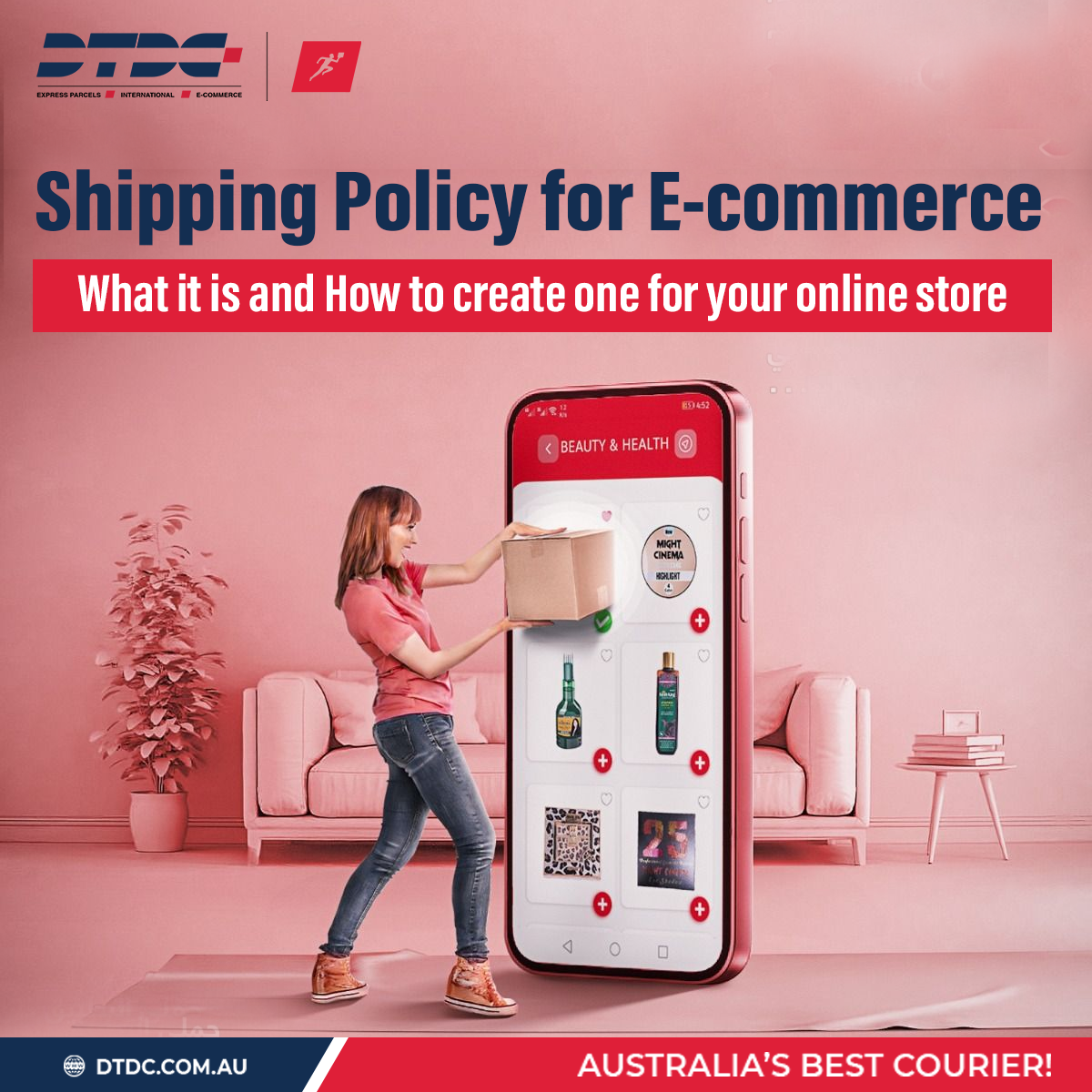In this fast-paced world of e-commerce, a well-drafted shipping policy is a critical element for any business looking to build trust and improve the customer experience. A transparent, detailed shipping policy helps set clear expectations, reduces customer service inquiries, and can even boost sales by encouraging customers to complete their purchases.
This blog will cover everything you need to know about creating a shipping policy for your online store, including what to include, best practices, and helpful examples.
What is the Shipping Policy?
A shipping policy is a document that outlines how an online retailer manages shipping orders, including estimated delivery times, shipping costs, and any restrictions. Essentially, it’s a set of guidelines that tells customers exactly how and when they will receive their purchases. A well-defined shipping policy includes details on domestic and international shipping options, processing times, tracking potential delays, and return policies.
Shipping policies are usually published as standalone documents or included within the company’s terms and conditions. They are also updated regularly to accommodate changes such as new carriers, expanded shipping regions, or seasonal delays. By being transparent about managing orders, you can create a more trustworthy experience for your customers.
Why is Shipping Policy important for E-commerce?
A clear and accessible shipping policy has multiple benefits for an e-commerce business:
- Builds Customer Trust: When customers can see exactly what they are paying for and how long it will take to receive their order, they feel more confident in making a purchase.
- Increases sales: Transparency about delivery and handling tines can help reduce cart abandonment, as customers are not left guessing about their purchase.
- Reduces Customer Service Inquiries: With a well-laid-out policy, customers are less likely to contact support for shipping-related questions.
- Sets Clear Expectations: By outlining any limitations or delays up front, you manage customer expectations, reducing potential complaints and negative reviews.
In today’s competitive market, having a well-communicated shipping policy can be the deciding factor for customers choosing between different online stores.
Essential Elements of an E-commerce Shipping Policy
To create an effective shipping policy, include these key components:
Order Processing Times
Provide an estimate of how long it takes to process an order after placing it. For example, “ orders are processed within 3-5 business days.” It also helpful to communicate cutoff times, such as “orders placed after 5 PM ET will be processed on the next business day.” Clear processing times give the customer a realistic timeline for when their order will be shipped.
Shipping Methods and Options
Outline the different shipping methods available (standard, expedited, overnight, etc) and specify any religious limitations. For instance, international shipping may only be available to specific countries. Listing carriers or service options, along with their estimated delivery times, can also be helpful. If tracking is provided, mention this so customers know what to expect post-purchase.
Shipping Rates and costs
Be upfront about shipping costs, whether it’s free shipping, flat rates, or calculated costs based on location. Many e-commerce stores offer free shipping on orders over a certain amount, which can encourage a larger purchase. If customers are responsible for any additional fees, such as import duties or taxes, make this clear to avoid surprises.
Clearly outline any shipping restrictions, such as areas you can’t deliver to (e.g., P.O. boxes or specific countries). If certain items have special conditions, like hazardous materials or items with fragile contents, specify any extra costs or extended delivery times.
Local Delivery and pickup options
For businesses with a brick-and-mortar presence or local fulfillment options, offer details about in-store pickup or local delivery. Many customers appreciate this option to avoid shipping fees. Define the steps customers need to take to schedule a local pickup or confirm eligibility for local delivery.
Returns, changes, and cancellations
Summarize your return policy and explain what customers can expect if they need to cancel or modify their order. Address how you handle refunds, exchanges, and lost or damaged goods. Link to your full return policy for easy access.
Order Tracking
Explain how customers can track their shipments after an order is processed. This might mean sending a confirmation email with tracking details or providing instructions on how to contact support for any issues with lost or delayed orders.
Potential service interruptions
A shipping policy is also a great place to mention any potential delays due to factors outside your control, such as seasonal demand, carrier delays, or supply chain disruptions. Transparency around these issues helps customers understand the potential reasons for a delay.
Best Practices for writing your shipping policy
A good shipping policy is easy to read, well-organized, and prominently placed on your website. Here are a few tips:
Keep it simple and direct
Use clear language to avoid confusion. Avoid complex terms or jargon: simplicity makes it easier for customers to understand what to expect.
Organize the content for readability
Use heading, subheading, and bullet points to create a skimmable format. You can even include tables for shipping options and delivery i=times to make the policy easier to digest
Make it easy to find
Ensure that your shipping policy is easily accessible. Consider placing it in your side’s footer, on your FAQ page, or even on product pages. Also, include links in order confirmation and shipping emails, as customers tend to keep these emails for reference.
Highlight any important changes
If your policy changes seasonally or due to unexpected delays, communicate this proactively. For example, you could add a notification banner on your homepage to inform customers of any service disruptions or deadlines.
Use a friendly Tone
Where possible, use a welcoming tone that shows customers you are committed to helping them receive their orders. A helpful, approachable tone can make a big difference in the customer’s perception of your business.
Examples of effective shipping policies
To get an idea of what a well-structured shipping policy looks like, here is a sample you can adapt.
Same shipping policy
Order processing: Our team processes orders within 3-5 business days. Orders placed after 5Pm ET are processed on the next business days.
Shipping Methods: We ship using USPS and FedEx. Delivery options include standard (5-7 business days) and express (2-3 business days). International orders generally arrive within 10-14 business days.
Shipping Rates: Free Shipping is available on order over $50. For orders below this threshold, a flat rate of $5 applies to domestic standard shipping. International shipping costs are calculated at checkout based on the destination.
Shipping Restrictions: We currently do not ship to P.O. boxes or APO addresses. International shipping is available to select countries; customers are responsible for any customs duties or import taxes.
Local Pickup: For customers near our physical store, we offer free in-store pickup. Orders will be ready within 2 business days, and customers will receive a notification email once their order is ready for pickup.
Returns and Cancellations: We accept returns within 30 days of purchase. For more details, please refer to our Return Policy. If you wish to cancel or modify an order, contact us within 24 hours of placing it.
Order Tracking: Once your order has shipped, you’ll receive a confirmation email with tracking details. If you encounter issues with your tracking information, please reach out to our support team.
Potential Service Interruptions: Orders may take longer than expected due to factors beyond our control, such as seasonal demand or carrier delays. We will update you on any known delays at the time of purchase.
How to Communicate Your Shipping Policy Across Your Site
To maximize the impact of your shipping policy, ensure it’s accessible and visible in multiple places across your website and customer communications:
• Website Footer: Add a link to your shipping policy in the footer, where visitors can easily find it on any page.
• FAQ Page: Include a brief summary of your policy on your FAQ page, with a link to the full policy.
• Product Pages: Place a short overview of shipping options and times directly on product pages, as these are often where purchase decisions are made.
• Confirmation Emails: Add links to your shipping and return policies in order confirmation and shipping notification emails for easy access.
• Social Media Profiles: Use a “link in bio” option for quick access to your FAQ or policy page, especially if social media drives significant traffic to your site.
Conclusion
A clear and comprehensive shipping policy is a powerful tool for any e-commerce business. By openly communicating your shipping processes, shipping costs, and timeframes, you build trust with your customers and improve their shopping experience. Your policy doesn’t need to be complex—simplicity and transparency are key.
Remember, every detail you provide helps set clear expectations and prevents confusion. If you’re unsure where to start, use our sample policy template above to build one that reflects your unique operations. Regularly review and update your policy to keep it aligned with any changes in your fulfillment network, shipping carriers, or customer needs.








